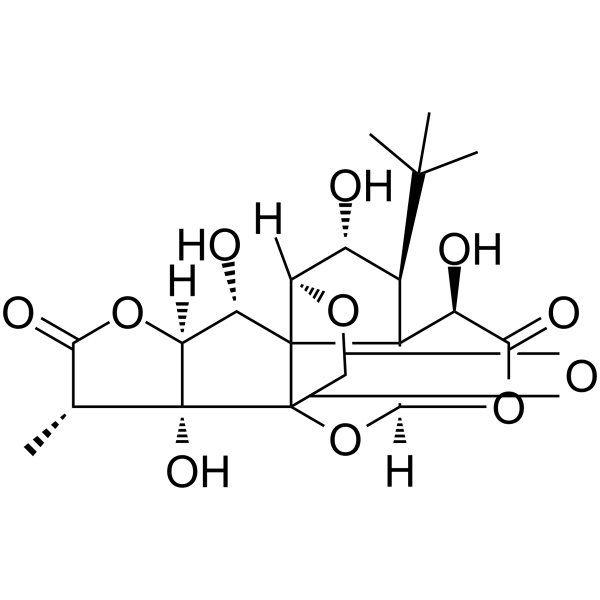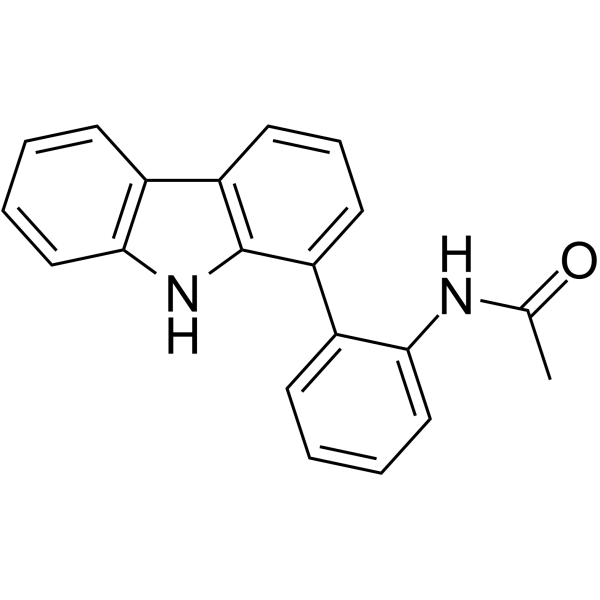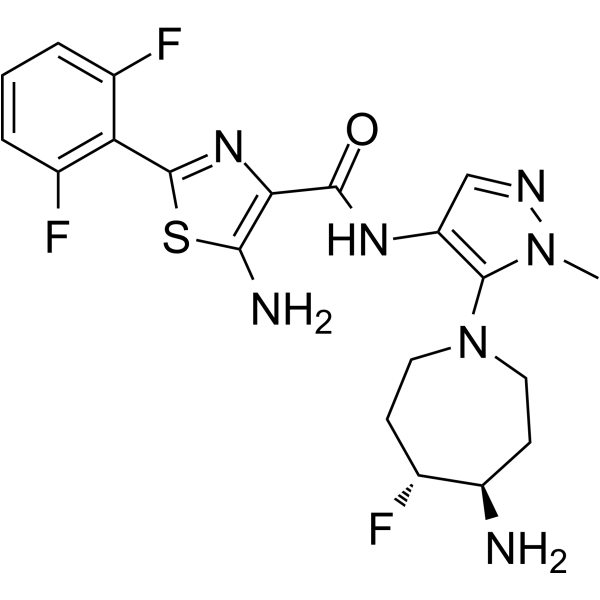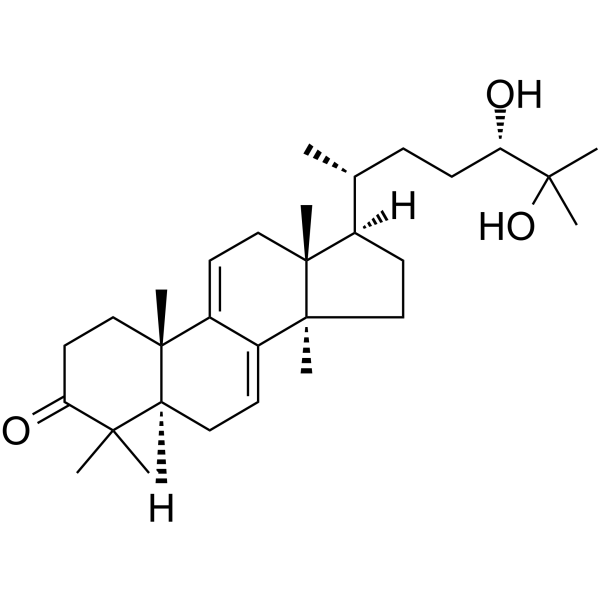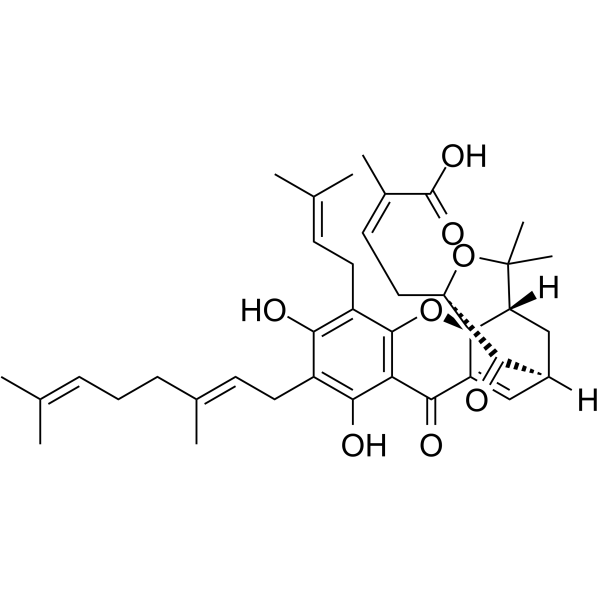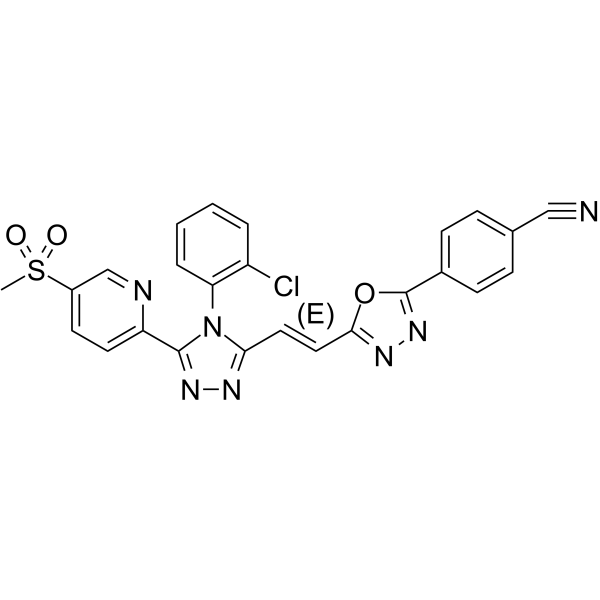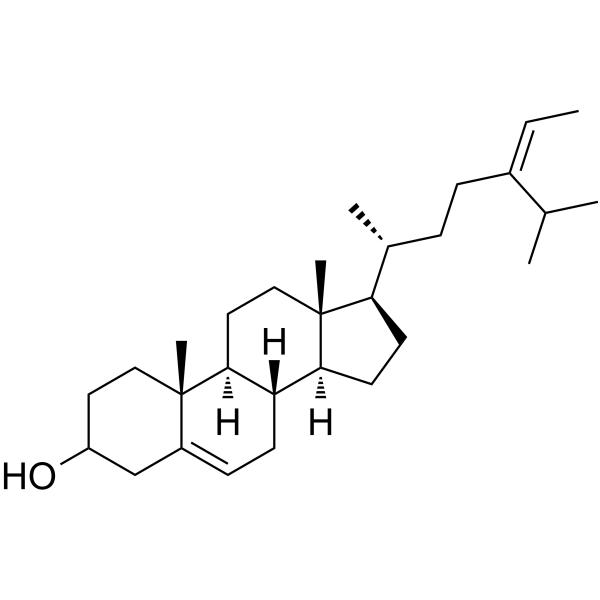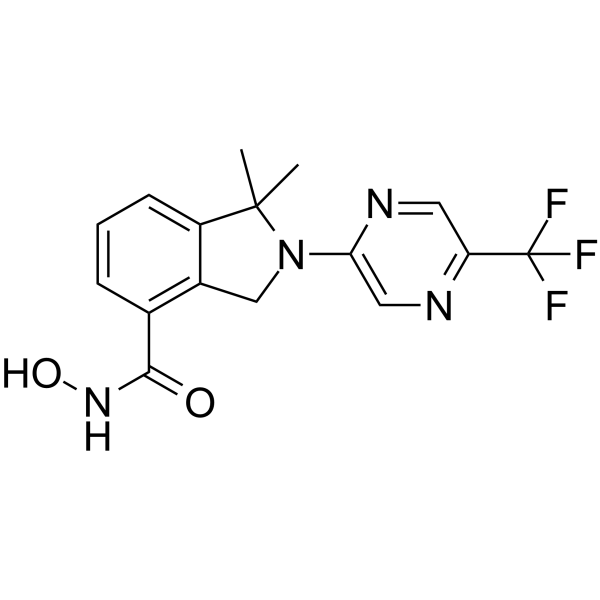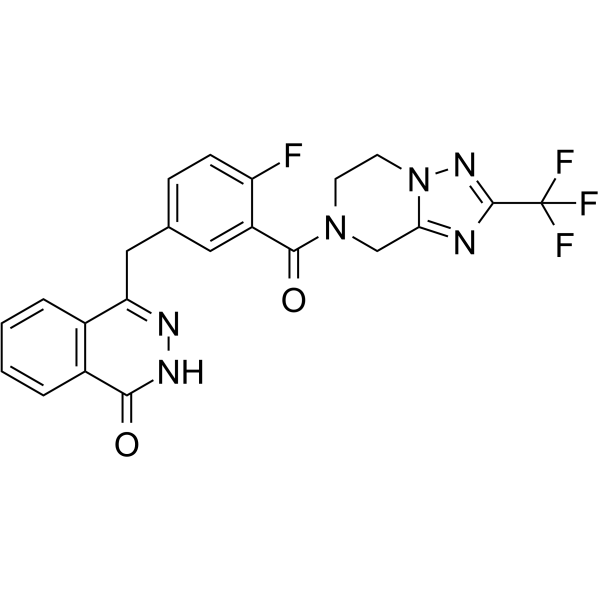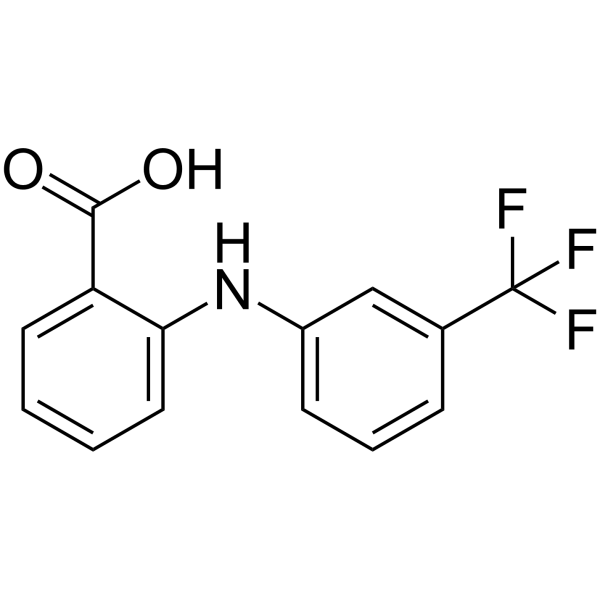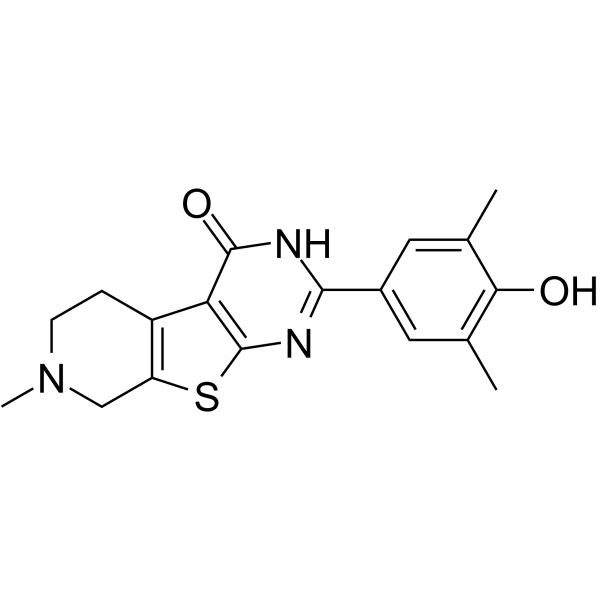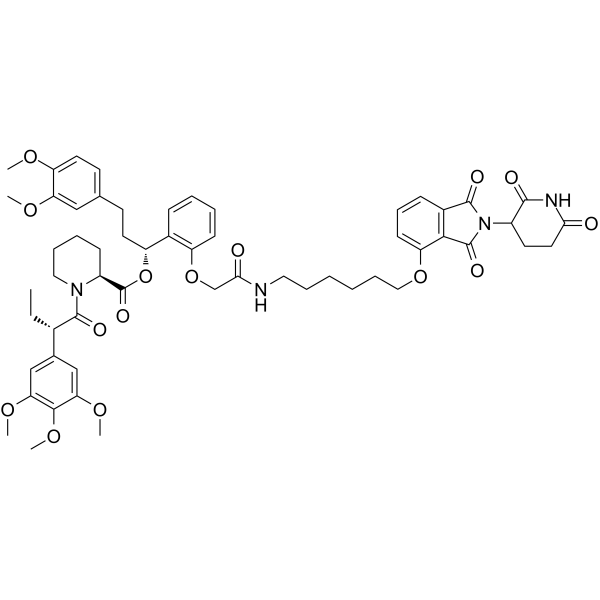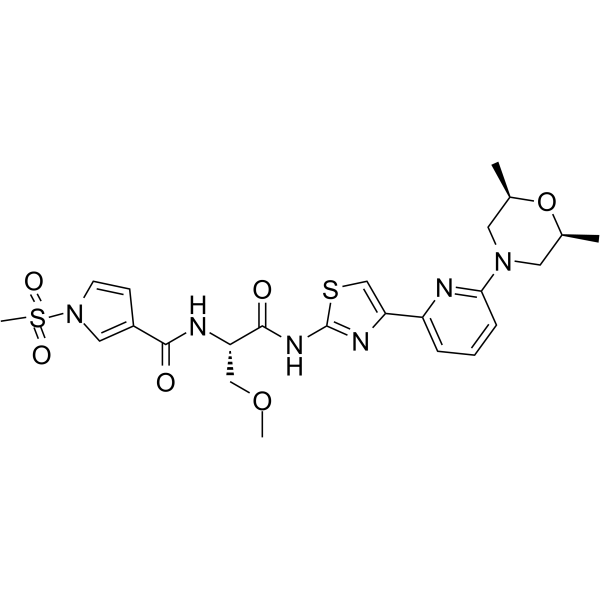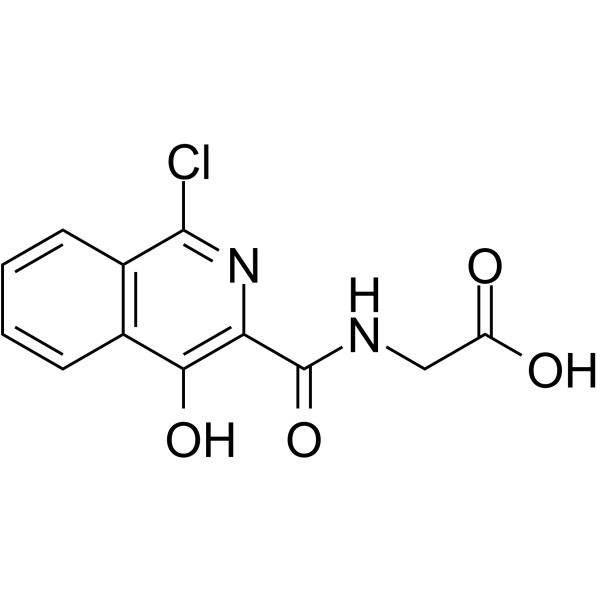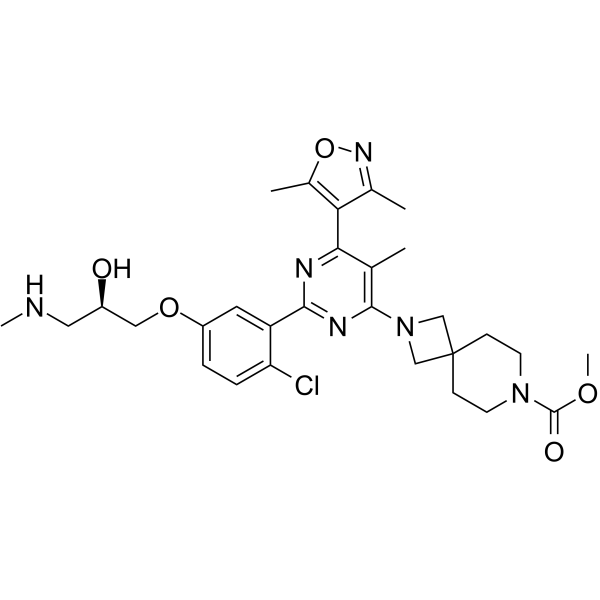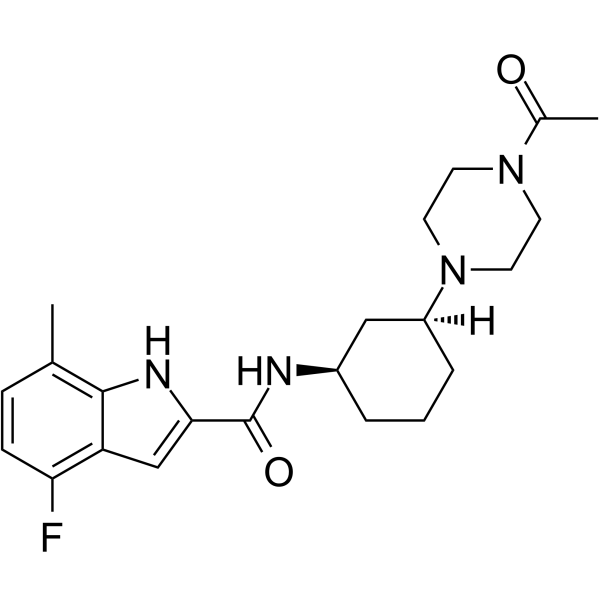|
BP13857
|
Ginkgolide C
|
|
|
|
|
Ginkgolide C, a natural product, can enhance the cardiac function of rats in the body.
|
|
BP13856
|
GeA-69
|
|
|
|
|
GeA-69 (GeA69) is a selective and allosteric PARP14 macrodomain 2 (MD2) inhibitor (Kd: 0.86 μM in ITC assays).
|
|
BP13855
|
GDC-0339
|
|
|
|
|
GDC-0339 is discovered as a potential treatment of multiple myeloma. GDC-0339 is an orally bioavailable and well-tolerated inhibitor of the pan-Pim kinase (Kis: 0.03 nM, 0.1 nM, and 0.02 nM for Pim1, Pim2, and Pim3, respectively).
|
|
BP13854
|
Gardenin A
|
|
|
|
|
Gardenin A has antihyperlipidemic and hepatoprotective effects, it also promotes neuritogenesis through the activation of MAPK/ERK-, PKC-, and PKA-dependent, but not TrkA-dependent, CREB signaling pathways in PC12 cells.
|
|
BP13853
|
Ganodermanondiol
|
|
|
|
|
Ganodermanondiol exhibits potent cytoprotective effects on t-BHP-induced hepatotoxicity in human liver-derived HepG2 cells, presumably through Nrf2-mediated antioxidant enzymes and AMPK.
|
|
BP13852
|
γ-Oryzanol
|
|
|
|
|
Gamma-Oryzanol is a natural nutrient extract isolated from rice bran oil that contains a mixture of sterols and ferulic acids, which may aid in the destruction of free radicals in the skin. It has recently been researched for its ability to slow the progress of melanin pigmentation by intercepting the ultraviolet rays at the skin's surface and hindering their transmission.
|
|
BP13851
|
Gambogenic acid
|
|
|
|
|
Gambogenic acid is a natural product,is an effective inhibitor of EZH2,with anticancer activity.
|
|
BP13850
|
G007-LK
|
|
|
|
|
G007-LK is a selective inhibitor of TNKS1 and TNKS2, with IC50s of 46 nM and 25 nM, respectively.
|
|
BP13849
|
Fucosterol
|
|
|
|
|
Fucosterol is isolated from E. stolonifera with anti-diabetic, anti-adipogenic and anti-cancer activities. It regulates adipogenesis via modulation of PPARα and C/EBPα expression.
|
|
BP13848
|
FT895
|
|
|
|
|
FT895 is a selective and potent selective HDAC11 inhibitor with an IC50 of 3 nM.
|
|
BP13847
|
Fluzoparib
|
|
|
|
|
fluzoparib is a novel, potent, and orally available inhibitor of PARP, potentially for the treatment of solid tumours.
|
|
BP13846
|
Flufenamic acid
|
|
|
|
|
Flufenamic acid is an anthranilic acid derivative with analgesic, anti-inflammatory, and antipyretic properties. It is used in musculoskeletal and joint disorders and administered by mouth and topically.
|
|
BP13845
|
FL-411
|
|
|
|
|
FL-411 is a potent and selective BRD4 inhibitor with an IC50 of 0.43±0.09 μM for BRD4.
|
|
BP13844
|
FKBP12 PROTAC dTAG-7
|
|
|
|
|
FKBP12 PROTAC dTAG-7 (dTAG-7) also is a selective degrader of BET bromodomain transcriptional co-activator BRD4 by bridging BET bromodomains to an E3 ubiquitin ligase CRBN. FKBP12 PROTAC dTAG-7 (dTAG-7) is a heterobifunctional degrader. FKBP12 PROTAC dTAG-7 (dTAG-7) is a degrader of FKBP12F36V with expression of FKBP12F36V in-frame with a protein of interest.
|
|
BP13843
|
FKBP12 PROTAC dTAG-13
|
|
|
|
|
FKBP12 PROTAC dTAG-13 (dTAG-13) is a degrader of FKBP12F36V with expression of FKBP12F36V in-frame with a protein of interest. FKBP12 PROTAC dTAG-13 (dTAG-13) also is a selective degrader of BET bromodomain transcriptional co-activator BRD4 by bridging BET bromodomains to an E3 ubiquitin ligase CRBN. FKBP12 PROTAC dTAG-13 (dTAG-13) is a PROTAC-based heterobifunctional degrader.
|
|
BP13842
|
FHD-286
|
|
|
|
|
FHD-286 is an inhibitor of BRM/BRG1 ATPase and can be used for studies on the treatment of BAF-related disorders such as acute myeloid leukemia.
|
|
BP13841
|
FG-2216
|
|
|
|
|
FG-2216 is a potent HIF-prolyl hydroxylase inhibitor for the PDH2 enzyme (IC50: 3.9 uM); orally bioavailable and induced reversible and significant Epo induction in vivo.
|
|
BP13840
|
EZM 2302
|
|
|
|
|
EZM2302 is a selective, and orally available arginine methyltransferase CARM1 inhibitor (IC50: 6 nM).
|
|
BP13839
|
EZM0414
|
|
|
|
|
EZM0414 is a selective SEDT2 inhibitor that is mostly used to study diffuse large B lymphocytoma and recurrent or refractory multiple myeloma.
|
|
BP13838
|
Exifone
|
|
|
|
|
Exifone is a mixed, nonessential activator of HDAC1 that is capable of binding to both free and substrate-bound enzyme, resulting in an increased relative maximal rate of HDAC1-catalyzed deacetylation.
|
